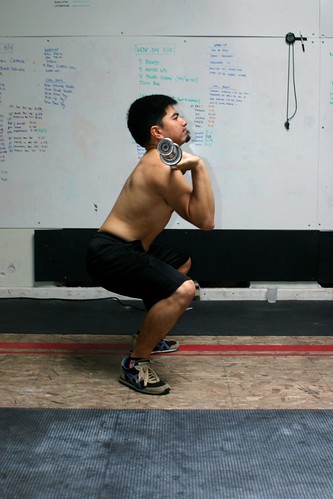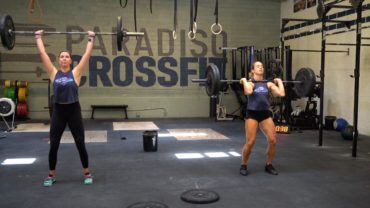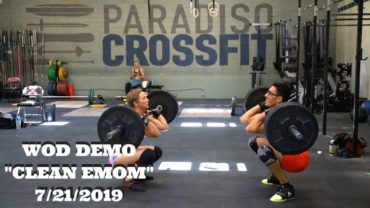Evidence Based Fitness
Queensland Australia Sectional WOD 2
10 minutes max reps, consisting of the following stations:
4 minutes – Thruster 50/35 kg
3 minutes – Kettlebell Swing 24/16 kg
2 minutes – Muscle ups
1 minute – Burpees
Athletes will move from one station to the next at the end of the allotted time without rest. A bonus rep will be awarded for each successful muscle up. (1 muscle up = 2 reps)
Chad Mackay 149, Yvette Maree 136
An athletes ability to keep the bar over the middle of the foot, throughout the entire range of motion, is integral to maximizing efficiency during workouts.
Diso and I are often queried our opinions of x fitness program or y training regiment, usually in comparison to or in conjunction with CrossFit. Any exercise is better than none, and we applaud all forms of it. But there are generally three criteria by which we evaluate any fitness protocol, especially our own:
Safety – How many people did you start with? How many did you end up with?
Were there injuries? Were the athletes still functional after the training?
Efficacy – What were the adaptations? What were you able to do as a result of the training, and what happened to your body?
Efficiency – What was the time rate of the above adaptations? How fast or slow did the changes occur?
We can increase the safety of a program but decrease it’s efficacy (stick with three or four movements and never progress past a certain weight or time.) Conversely, we can increase the efficacy at a cost to safety (increase intensity to achieve faster times/higher weights until a higher risk of injury occurs.) To optimize the value of a fitness program is to have all 3 vectors move in the same direction.
But the significant factor is not necessarily that the criteria are being met, but that any claims to the above are supported by measurable, observable, and repeatable data. Your recent Paleo/Fran experiment is an exciting, but far from perfect, example of this. It was measurable and observable in that each Fran time is a data point, reducible to so many units of horsepower (ft.
lbs. per minute), and to the accuracy and precision of a hundredth of a second. It is arguably repeatable in that our results have been replicated by similar experiments of other boxes, and likely will be in the future.
And so, our evaluation of a programs safety, efficacy, and efficiency, supported by measurable, observable, and repeatable data is what we call Evidence Based Fitness.
Evidence Based Fitness Lecture by Greg Glassman
Evidence Based Fitness Discussion by Greg Glassman, et al.
















